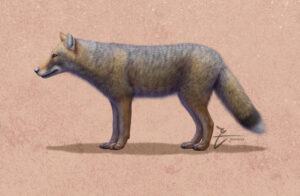A passion for the natural world drives many of our adventures. And when we’re not actually outside, we love delving into the discoveries about the places where we live and travel. Here are some of the best natural history links we’ve found this week.
NASA spacecraft touches the sun: Last April, NASA’s Parker Solar Probe became the first spacecraft to ‘touch’ the sun, scientists just announced. The spacecraft reached the corona, the sun’s upper surface. NASA launched the probe in 2018. With every orbit of the sun, it inched closer. It finally crossed into the outer atmosphere on April 28 and remained there for five hours. The probe’s composition of tungsten, niobium, molybdenum, and sapphire allows it to cope with the intense temperature. “The goal of this entire mission is to learn how the Sun works. We can accomplish this by flying into the solar atmosphere,” says astrophysicist Michael Stevens. In total, the probe will approach the sun 24 times. In 2025, it will get even closer, four million miles away. Although that sounds far, one expert explained, “If the sun is at the endzone of a football field, Parker will be at the four-yard line.”

Meerkats: ruled by a tough matriarch. Photo: Shutterstock
Meerkat matriarch, high on testosterone, bullies underlings
Testosterone drives meerkat status: Testosterone Is crucial to the evolution of meerkat societies. Every meerkat gang has a clear leader, a matriarch. New research shows that the matriarch’s control depends almost entirely on her having very high levels of testosterone. The matriarch stops other females in her gang from reproducing, often attacks other pregnant meerkats or kills their pups so that the other females give her pups their undivided attention. They also push, shove, bite, and growl to show their dominance. “In non-pregnant matriarchs, testosterone values are equivalent to the males’, and just a little bit lower [than] subordinate females. But when matriarchs get pregnant, they ramp up,” said Christine Drea of Duke University. In one experiment, researchers treated matriarchs with flutamide, which suppresses testosterone. They almost immediately lost their edge, and their subordinates became less deferential.
Hydroelectric dams linked to tiger and jaguar losses: Dam construction has affected one-fifth of the world’s remaining tigers. Thousands of dams intersect the ranges of tigers and jaguars, and over 13,000 square kilometres of their habitat have been flooded to create reservoirs for the dams. Tigers have now disappeared from 90% of their former range, and this is quickening their decline. “Without these reservoirs, the tiger population today could be 20% larger,” said researcher Luke Gibson.

Photo: Shutterstock
Viking exodus pinned to swamped coastline
Sea level rise drove Vikings out of Greenland: Ice sheet growth and sea-level rise led to the coastal flooding that drove the Vikings out of Greenland in the 15th century. The Vikings first appeared in southern Greenland around A.D. 985, but in the 15th century, all signs of them disappear from archaeological records. Researchers thought that climate change and economic shifts caused this. New findings suggest that rising seas submerged miles of coastline and caused the exodus of the Vikings.
Robofish thwarts an invasive fish: Mosquitofish are native to western and south-eastern America. In the 20th century, they were released into freshwater ecosystems around the world in a misguided effort to control malaria outbreaks. The little fish typically eats mosquito larvae. Instead, the introduced fish mostly ate the eggs of native fish and amphibians. They have no natural predators in these areas and threw ecosystems into chaos. They have become one of the world’s most destructive invasive species. To combat the invasion, scientists have created a robotic fish that mimics the mosquito fish’s natural predators. This robofish causes increased fear and stress in the mosquitofish, reducing their survival and reproduction success.

The robofish. Photo: Giovanni Polverino
A millipede that actually has 1,000 legs
The first true millipede: The first millipede with more than 1,000 legs has been discovered in Western Australia. The millipede turned up during an environmental impact assessment in a mining area in the Eastern Goldfields region. A species in central California with 750 legs held the previous record. The new species has been named Eumillipes persephone, after Persephone, the Greek goddess of the underworld. The creature has 1,306 legs, a long, thread-like body with 330 segments, and a cone-shaped head. “As soon as I realized how long they were…I knew they had to be something completely different,” said researcher Bruno Buzatto.

A female Eumillipes persephone. Photo: Paul E. Marek
Brazil wildfires killed 17 million animals: Between January and November 2020, wildfires raged across Brazil. In total, these wildfires destroyed 30% of the tropical wetlands often touted as the “lungs of the earth”. New reports estimate that 17 million vertebrates, including reptiles, birds, and primates perished. The 22,000 fires were very different from those typical to the region. They were so unusual because of their much greater size and because they were clearly linked to the mega-drought in the area at that time. “The Pantanal can’t keep burning to this huge extent year after year,” said ecologist Alex Lees. “Biodiversity can’t recover from that.”






